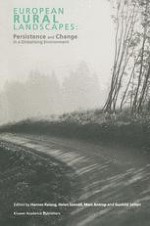2004 | OriginalPaper | Buchkapitel
Different Methods for the Protection of Cultural Landscapes
The Example of an Early Industrial Landscape in the Veluwe Region, the Netherlands
verfasst von : Johannes Renes
Erschienen in: European Rural Landscapes: Persistence and Change in a Globalising Environment
Verlag: Springer Netherlands
Enthalten in: Professional Book Archive
Aktivieren Sie unsere intelligente Suche, um passende Fachinhalte oder Patente zu finden.
Wählen Sie Textabschnitte aus um mit Künstlicher Intelligenz passenden Patente zu finden. powered by
Markieren Sie Textabschnitte, um KI-gestützt weitere passende Inhalte zu finden. powered by
In most countries in Europe and Northern America, since the end of the 19th century a growing number of buildings and archaeological objects have been designated as cultural heritage and they are protected as such. Protection of larger areas started also during the end of the 19th century. In this case, the initiative usually came from nature protection quarters. Many of the oldest National Parks are designated mainly for their ecological values. In the course of the 20th century, the interest in cultural landscapes grew. on the one hand, protection of buildings and archaeological sites often proved unsatisfactory when these objects became disparate from their fast changing surrounding landscapes. on the other hand, ecologists realised that most of the landscapes they wanted to protect, were in fact the result of centuries-long human influence. During the second half of the 20th century, protection of cultural landscapes became part of the political agenda in a number of countries. In some countries — most prominently in the United Kingdom — cultural landscapes, including living agrarian landscapes, were designated as national parks. Most of these protected landscapes are situated in regions which are marginal for agriculture, and national park status is often seen as a means to attract tourists and subsidies.
